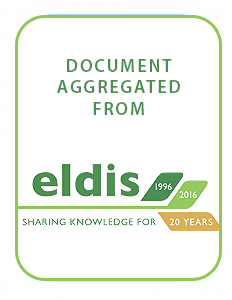Resource information
Will intensifying the road network around market areas produce greater economic returns and less environmental damage than extending the road network into new areas?Rural roads promote economic development but also facilitate deforestation. To explore the trade-offs between development and environmental damage posed by road building, Chomitz and Gray develop and estimate a spatially explicit model of land use. This model takes into account location and land characteristics and predicts land use at each point on the landscape.They find that:Market access and distance to roads strongly affect the probability of agricultural use, especially for commercial agriculture. High slopes, poor drainage, and low soil fertility discourage both commercial and semi subsistence agriculture. Semi subsistence agriculture is especially sensitive to soil acidity and lack of nitrogen (confirming anthropological findings that subsistence farmers are shrewd judges of soil).Spatially explicit models are analytically powerful because they exploit rich spatial variation in causal variables, including the precise siting of roads. They are useful for policy because they can pinpoint threats to particular critical habitats and watersheds.This model is a descendant of the venerable Thunen model. It assumes that land will tend to be devoted to its highest value use, taking into account tenure and other constraints. The value of a plot for a particular use depends on the land's physical productivity for that use and the farm gate prices of relevant inputs and outputs. A reduced form, multinomial logit specification of this model calculates implicit values of land in alternative uses as a function of land location and characteristics. The resulting equations can then be used for prediction or analysis.The model was applied to cross-sectional data for 1989_92 for Belize, a forested country currently experiencing rapid expansion of both subsistence and commercial agriculture. A geographic information system was used to manage the spatial data and extract variables based on a three kilometre sample grid.Three land uses were distinguished: "natural" vegetation, comprising forests, woodlands, wetlands, and savanna; semi subsistence agriculture, comprising traditional milpa (slashandburn) cultivation and other non mechanized cultivation of annual crops; and commercial agriculture, consisting mainly of sugarcane, pasture, citrus, and mechanized production of corn and kidney beans.Two dimensions of distance to market were distinguished: the distance from each sample point to the road, and in road travel time to the nearest town. Data on a wide variety of land and soil characteristics were also used.This paper --- a product of the Environment, Infrastructure, and Agriculture Division, Policy Research Department --- is part of a larger effort in the department to understand the causes and consequences of environmental change. The study was funded by the Bank's Research Support Budget under the research project "Spatial Models of Environmental Processes" (RPO 67939). Copies of this paper are available free from the World Bank, 1818 H Street NW, Washington, DC 20433. Please contact Elizabeth Schaper, room N10037, extension 33457 (50 pages).The full report is available on the World Bank FTP server.



